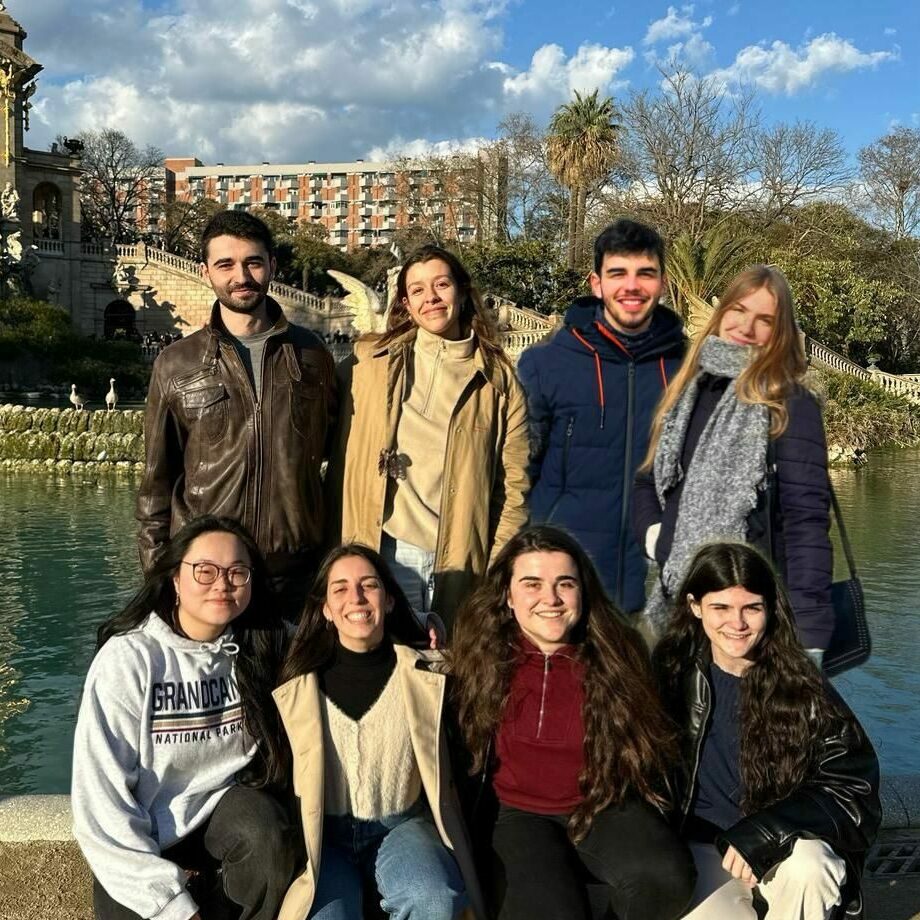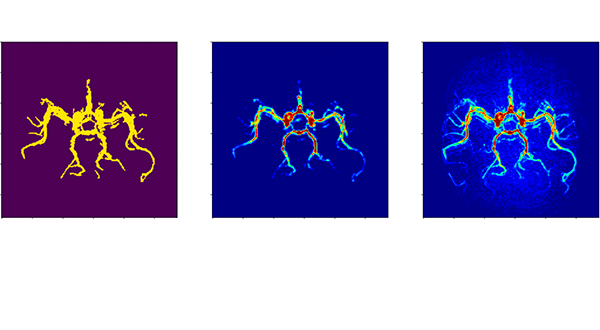Projects

Development of a Biosensor for Early Detection of Acute Kidney Injury (AKI)
A multidisciplinary team of students from UB and UPC is participating in the international SensUs 2025 competition, developing an innovative biosensor capable of continuously monitoring creatinine levels — a key biomarker for kidney function. The goal: to advance personalized healthcare solutions and enable the early and effective detection of kidney dysfunction.

Multiscale data analysis in translational cardiology: from ion channel to cardiac contraction
Genetic and functional biomarkers of ventricular fibrillation will be studied. In this first aim we will appty artificial intelligence tools to a cardiology database with clinical parameters and cellular function indicators. A second objective is to identify molecular targets that reduce the spontaneous calcium ralease events in cardiac cells.
Tools will be developed to automatically analyze the activation patterns of the ryanodine receptors from fluorescence microscopy images of transgenic mice in which RyR are labeled with fluorescence green protein. Analysis tools will also be developed to characterize calcium propagation fronts in cell cultures. The third objective aims improving the impact of studies at the cellular and molecular level in the phases of prevention and treatment of cardiovascular diseases. We will develop new ways of visualizing data to improve the impact of basic studies in a clinical context.
IP: Raúl Benítez Iglesias

Transversal Programme in Medical Image PostProcess
The EXPERT3D course will enable professionals to perform post-processing of the radiological image for healthcare and research – employing advances like 3D image-prints, virtual technologies and artificial intelligence. These disruptive technologies have fostered the merger of engineering and medicine, creating a demand for professionals with new skills that unite the two disciplines.
IP: Raúl Benítez Iglesias

Social media platform dedicated to rare diseases using collective intelligence for the generation of awareness and advanced knowledge on this large group of diseases
The Share4Rare platform is a safe space where patients and carers can connect, share knowledge and get involved in scientific research. Rare diseases research is usually hampered by the few number of patients and geographic and language barriers. The Share4Rare platform allows patients to get involved from anywhere in the world, connect with people like them and push together to advance research. Share4Rare is a collective awareness platform of patients, caregivers, researchers and other stakeholders involved in the growing health challenge of Rare Diseases (RD). Based on a socially innovative approach, and building on citizen science and collective intelligence, we engage and connect all the relevant actors, towards the improvement of the quality of life, the disease management and the collection of scientific knowledge on RD. The platform is built around three important pillars: Education, Sharing and Research. It builds on existing knowledge ensuring co-creation and research.
IP: Alexandre Perera Lluna

Altitude performance in elite athletes: genetic, metabolic and neurocardiovascular analysis in training and competition
Research on sport performance is heavily related to basic biology, physiology, psychology, medicine and sport science. Modern sport is introducing complex multi-level research in order to understand performance differences as function of genetics, diet and training scheme. Training scheme design is known to have a great impact on performance. Altitude training (AT) has been a matter of extensive research for half a century and despite some skeptical views it still plays an important role in the preparation of athletes in many countries. The project aims for the understanding of the differences in training and performance between sea level and moderate altitude training. This understanding covers a characterization of biological samples with metabolomic profiling, transcriptional regulators, and a biological interpretation of these interactions under cross-validated prediction models of performance and health related indexes.
IP: Alexandre Perera Lluna

Novel bioprinting strategies for bone regeneration cancer therapies (PRINT4LIFE)
The main objective of PRINT4LIFE is to develop scaffolds for the treatment of complex critical size bone defects in a patient-specific manner, able to respond to the challenging needs of patients affected by complex situations derived from osteoporosis, osteomyelitis or cancer.
PRINT4LIFE proposes a combinatorial approach using the most recent progresses in 3D ink-jet printing technology together with advanced therapies such as drug delivery and tissue engineering, and covers from the development of bioinks to the direct printing of customized scaffolds, including the characterisation of their physical and chemical properties and their pre-clinical evaluation.
IP: Maria Pau Ginebra Molins

Atmospheric Pressure Plasma meets biomaterials for bone cancer healing (APACHE)
Cold atmospheric pressure plasmas (APP) have been reported to selectively kill cancer cells without damaging the surrounding tissues. Studies have been conducted on a variety of cancer types but to the best of our knowledge not on any kind of bone cancer. Treatment options for bone cancer include surgery, chemotherapy, etc. and may involve the use of bone grafting biomaterials to replace the surgically removed bone. APACHE brings a totally different and ground-breaking approach in the design of a novel therapy for bone cancer by taking advantage of the active species generated by APP in combination with biomaterials to deliver the active species locally in the diseased site. In APACHE we aim to investigate the fundamentals involved in the lethal effects of cold plasmas on bone cancer cells, and to develop improved bone cancer therapies.
IP: Cristina Canal Barnils

ABLE Exoskeleton
Spinal cord injury (SCI) is a catastrophic event that thrusts 5M people worldwide into a life challenged by disability. People with a SCI could walk again if they had a robotic exoskeleton to restore the leg movements affected by the injury. However, current solutions are expensive, heavy and require professional supervision. Therefore, they are only found in large hospitals and are out of reach for the patient. ABLE is the first lightweight, easy-to-use and affordable exoskeleton that restores the patient’s ability to walk naturally and intuitively. It is based on an electric actuator and an inertial sensor that provide knee movement mimicking human natural movement and detect the user’s intention to take the step forward. ABLE provides accessible both hospital and homecare solutions that help palliating health issues caused by sedentary lifestyle while boosting self-confidence and independence.
IP: Josep Maria Font Llagunes

Design of personalized robotic and neuroprosthetic wearable systems for walking assistance using a predictive simulation framework (TAILOR)
Wearable robotic and neuroprosthetic technologies have been proposed from some decades now for rehabilitation of walking function in people with neurological impairments. However, these technologies still show limited efficacy due to their complexity, cost and generality. TAILOR project aims at developing a new generation of modular lower limb robotic exoskeletons and neuroprostheses that enable delivering of personalized, patient-specific technology for functional compensation of walking impairments. Furthermore, the technology developed will also have the capability of hybridation, where the two technologies are combined as a single device for providing hybrid assistance of walking. TAILOR will also investigate on the criteria and procedures needed for personalizing to the specific user requirements, while developing a unified evaluation framework for benchmarking technology performance and functional outcomes.
IP: Josep Maria Font Llagunes

Implications of Medical Low Dose Radiation Exposure (MEDIRAD)
MEDIRAD aims to enhance the scientific bases and clinical practice of radiation protection in the medical field and thereby addresses the need to understand and evaluate the health effects of low dose ionising radiation exposure from diagnostic and therapeutic imaging and from off-target effects in radiotherapy (RT).
MEDIRAD will pursue 3 major objectives:
IP: Mercè Ginjaume Egido

Personal Online DosImetry Using computational Methods (PODIUM)
The objective of PODIUM is to improve occupational dosimetry by an innovative approach: the development of an online dosimetry application based on computer simulations without the use of physical dosemeters. Protection quantities and radiosensitive organ doses (e.g. eye lens, brain, heart, extremities) will be assessed based on the use of modern technology such as personal tracking devices, flexible individualized phantoms and scanning of geometry set-up. When combined with fast simulation codes, the aim is to perform personal dosimetry in real-time.
The availability of the proposed online personal dosimetry application shall overcome the problems that arise from the use of current passive and active dosemeters and increase awareness among workers. The application will be tested in interventional radiology procedures. The PODIUM project is part of Concert European Joint Programme for the Integration of Radiation Protection Research under Horizon 2020.
IP: Maria Amor Duch Guillen

Gait rehabilitation and assistance
Rehabilitation and walking assistance are addressed with different devices, from a “Rollator” a smart walker, to a robotized treadmill or an exoskeleton. The goal is multiple thanks to the ability of robotic systems to act on the information perceived. The robot can not only act in assistance but is also a means to monitor the rehabilitation or activity of the user, which allows to monitor the evolution of the recovery or simply its supervision. The “rolling” walker is already in the transfer phase, having already certified the pre-industrial prototype.
The Norwegian company Topro will incorporate CREB monitoring and control technology into its rollators. The robotized treadmill evaluated by the neurorehabilitation team of Sant Joan de Déu Hospital is in the process of looking for opportunities for its translation to industry, while the exoskeleton, is in the phase of development of new features, supporting actions such as standing (sit-to -stand), balance, or gait assistance.
IP: Antonio B. Martínez/ Joan Aranda

Robot assisted fetal surgery
Minimally invasive fetal surgery presents various difficulties since the fetus does not have a stable position inside the uterus and its access requires traversing several layers of tissue, the abdomen and uterus. The dexterity needed in this surgery and the risk of incidents find in robotics a potential assistant for both the stabilization of movement and as an aid to guidance. Robotics allow achieving more accuracy and reduce risks and operation time. The project developed consists of a teleoperation platform that allows the application of robot control strategies, from the processing of the image, thus acting like an assistant to the surgeon for its guidance, supervision and improve safety. In the first phase, the research has been focused on the generation of a map of the placenta from the local image provided by the fetoscope, which is then used to locate points of anastomosis for the treatment of fetal-fetal transfusion syndrome and assist in guidance and stabilization.
IP: Alícia Casals/Albert Hernansanz

Improvement of procedures in catheter ablation of arrhythmias based on electrical impedance measurement systems
This translational project aims to develop and verify the accuracy of a novel myocardial impedance mapping system based on multifrequency electrical impedance measurements. A 3D voltage mapping of endocardial electrograms and myocardial electrical impedance is measured and displayed in real time.
IP: Javier Rosell Ferrer

Localized Bioimpedance to assess musculoskeletal tissue
We investigate the use of localized Bioimpedance (L-BIA) to assess musculoskeletal tissue: activation, damage and injury by localized bioimpedance measurements. The results are compared to T2 mapping and diffusion-tensor techniques.
IP: Lexa Nescolarde Selva

MyoShirt
Musculoskeletal rehabilitation is currently based on functional exercises, force production and movement imbalances. However, clinicians and patients do not have information on muscular conditions during exercises despite being the origin of the disorder. MyoShirt is a project which intents to bridge this gap in partnership with Artesana de Clofent, a manufacturer of technical fabric for medical applications.
The solution is a wearable device based on high density surface electromyography for monitoring of rehabilitation exercises of upper-limb, composed of:
IP: Miguel Ángel Mañanas Villanueva

Multimodal analysis for assessment and rehabilitation of disabling neurological disorders
Disabling neurological disorders are diseases or injuries of the central nervous system that cause impairment of any part of the body. They include diseases of both central and peripheral nervous systems such as epilepsy and stroke. The project aims at the development of new methods and e-health systems for evaluating impairments in neurological disabling disorders based on a multimodal approach, considering information of neurological, cardiorespiratory and muscular origin.
The main objective is twofold:
IP: Miguel Ángel Mañanas Villanueva / Sergio Romero Lafuente


